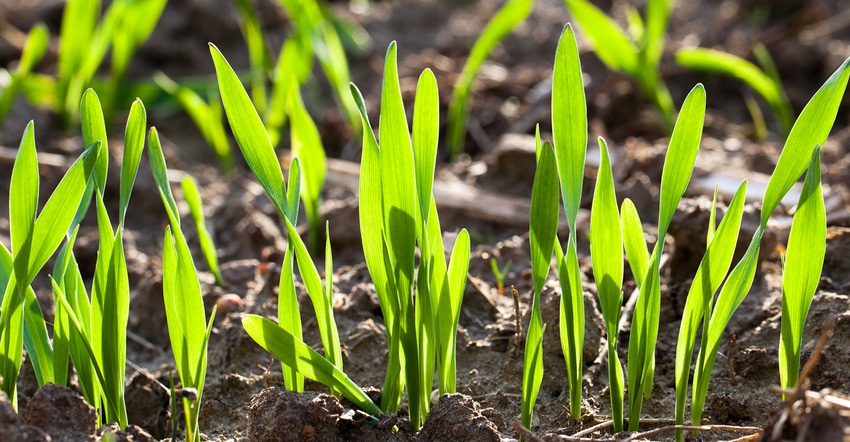
With daytime temperatures fluctuating from chilly to hot, wheat and other cereal crops are sure to explode out of hibernation. That means application time for spring nitrogen, and close monitoring for leaf diseases and head scab.
In Maryland, the state Department of Agriculture sets the date for when farmers can begin topdressing with commercial fertilizer. This year, farmers were able to begin topdressing Feb. 25 — as long as it’s part of the farm nutrient management plan. That date is determined by University of Maryland plant experts. Farmers had to wait until March 1 to begin applying manure.
Each year, University of Maryland researchers examine soil temperatures and crop growth over the winter to estimate when small grains will emerge from dormancy and benefit from spring N application. It’s based on growing degree units.
This winter has been interesting, acknowledges Bob Kratochvil, Extension agronomist at University of Maryland. Through January, it was colder than normal, which resulted in a slow accumulation of growing degree units. The first couple weeks of February were warmer, and the growing degree units quickly accumulated.
Based on the extended forecast, Feb. 25 was the date picked. University of Maryland recommends split applications of spring N with the second application when the crops begin to joint.
‘Time your fungicides’ video
Penn State Extension has a new Identifying wheat stages for fungicide application video that may help you anticipate the growth stage on wheat for best fungicide timing to prevent the costly diseases.
About the Author(s)
You May Also Like




